I admit that I didn’t go to Valencia with very high expectations. But I left this city in Spain, near the Costa Blanca, with one thing in mind that I don’t usually have after spending a few days in a place: I would always come back. Valencia is a fantastic city. Valencia, Spain. It is different from Barcelona or Madrid. It doesn’t have the charm of Gaudi’s city or the imperial elegance of the capital. Valencia is like a 40-year-old man full of pleasant surprises, whose scent is always fresh, even if it seems different every day.
Valencia is the candy box of Mediterranean Spain, and Valencian sweets are of the highest quality. That’s why I’ve gathered from the ground up information on what to do and see in Valencia. Which are the most beautiful tourist attractions in Valencia, Spain?
Valencia is a great city to spend a summer holiday in, as you can come on a city break for just a few days, whether it’s March or November. In Valencia you have the beach, culture, gastronomy, architecture, and history – you couldn’t wish for more in a city with airy, wide boulevards, where (if you rent a car) you can drive freely, in the good urban spirit generated by roundabouts, where you can park for free on the side of the road and where no one ever gives the impression that they are irritated by anything.



I spent a week in June in Valencia and managed to savor its charm fully. About some of the places I visited – the classics, for now, on my second foray, I promise to dive deeper into the city’s secrets – in what follows.
Some of them I saw with the help of Maria Terrén, country manager for Eastern Europe at the Valencian Tourist Board, who showed me perfectly how things are done when you want to promote your city. Alongside her, my thanks also go to Marta Sanz Navarro, sales manager in the marketing department of Oceanografic Valencia.
Like any self-respecting city (which also respects its visitors), Valencia offers a tourist card through its tourist office counters (which you can find everywhere in the city, including the airport).
With the Valencia Tourist Card, valid for 24 (€13.5), 48 (€18), or 72 hours (€22.5), you get lots of perks, and it’s not just money thrown out the window but real discounts and freebies. For example, with VLC, you get free transport on buses, trams, and the metro, free access to museums and public buildings, discounts of up to 50% on entrance tickets to various places (such as the Biopark or the City of Arts and Sciences), plus other advantages you can find on the website.
This being said, let’s see the top things to do in Valencia, and the top tourist attractions in Valencia, Spain.
And here, you will find out how to spend 3 epic days in Valencia.
Here you can find the best hotels in Valencia.
- Top tourist attractions in Valencia
- Map with the best places to see in Valencia, Spain (zoom for details)
- 10 Turia Gardens
- 9 Albufera Nature Park
- 8 Port Saplaya
- 7 Mercado Central and Mercado de Colon
- 6 Barrio del Carmen (El Carmen)
- 5 Cathedral and Plaza de la Virgen
- 4 Malvarrosa Beach and Marina
- 3 City of Arts and Sciences
- 2 Oceanographic
- 1 Bioparc
- 10 places to see in Valencia (video)
- Conclusion
- Pin it!
Top tourist attractions in Valencia
Map with the best places to see in Valencia, Spain (zoom for details)
10 Turia Gardens
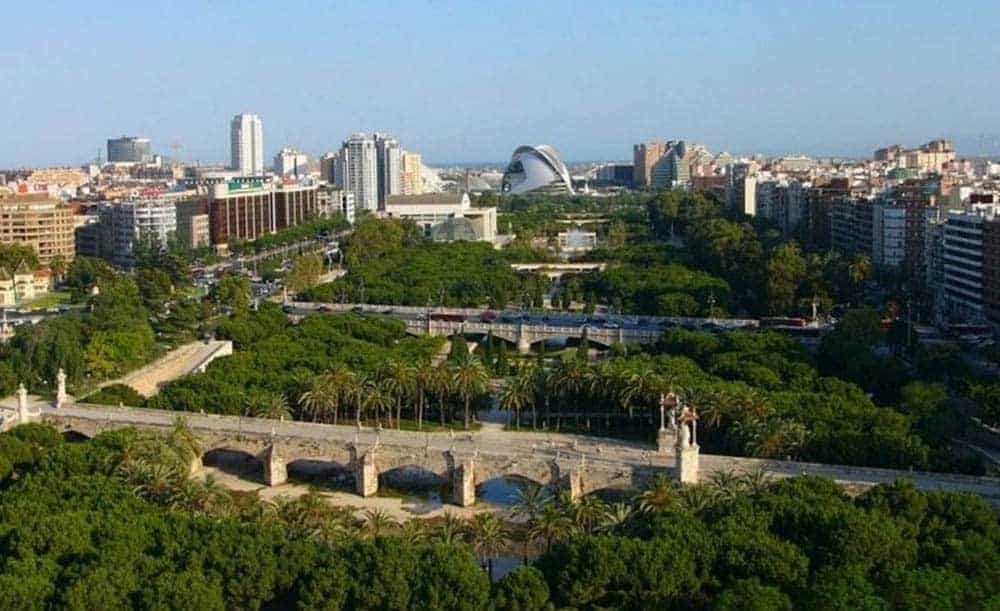
What’s it like to have a park in the city that spans 9 kilometers? And the park is not just a bunch of trees and bushes but a space designed with perfect architectural balance, harmonizing with the surrounding urban elements. You have to live in Valencia to know. Until the mid-20th century, the city was crossed by the River Turia.
In 1957, after floods devastated Valencia, the city council decided to drain the river artificially to the south. On the site of the old river, a huge area was left, which Catalan architect Ricardo Bofill transformed into what is now called the Turia Gardens – a 120-hectare park that hints at the idea of Moorish gardens.
The park is divided into 12 sections, each with its personality and characteristics. In some, there are paths for cyclists and runners, and cross-country runners; in others, there are facilities for playing certain sports – football, rugby, basketball, baseball, etc. Some are simply beautiful gardens – like the Palau Gardens, home to the Palau de la Música auditorium and the work of Valencian architect José María García Paredes.
I walked through the Turia at night and was fascinated by the magical energy such a park can release. There are no less than 18 bridges, dating from the 15th-17th centuries, that cross over it. Valencia can really be discovered on a walk through these gardens. With its museums, monuments, architecture, and history.






In Turia, you uncover something from meter to meter. Whether it’s palm trees, orange trees, pine trees, herbs, roses, or surprises like Guliver Park, where the character from Jonathan Swift’s story has been transformed into a vast children’s playground with all sorts of slides and tunnels.
And the most beautiful area is undoubtedly the one near the City of Arts and Sciences, where the urban landscape is transformed into a setting that looks like something out of a science fiction film.
9 Albufera Nature Park

Those who live in Bucharest may have heard of Comana Nature Park, about 20 km away, a place where besides an adventure park, visitors can walk in the middle of nature and do activities accordingly, including bird watching or boating on a natural delta. Roughly the same thing multiplied by ten is the Albufera lagoon, one of the most important natural areas that lie in the south of Valencia, half an hour’s drive away.
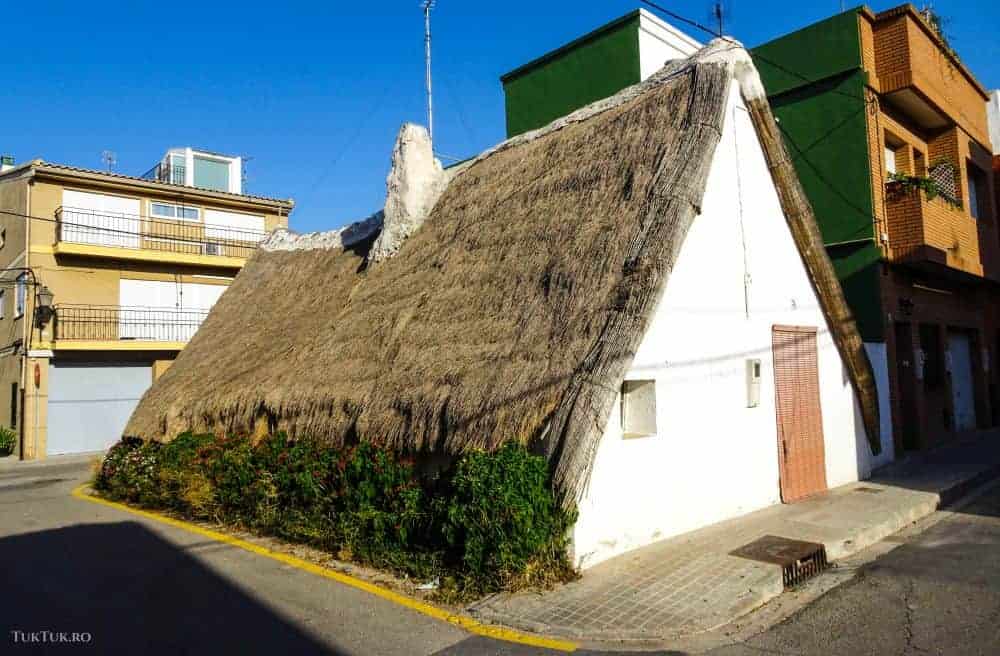

There are three canals – two natural, one artificial – connected to this lagoon, which surrounds the expanse of water and connects to the sea, each with its fauna and flora.
A protected corner of nature, whose life you can feel and touch best by going to the village of El Palmar, which lies on the shore of the lagoon. It’s best to arrive in El Palmar in the evening hours to catch the sunset and dine at one of the more than 30 restaurants in the area. It is said that the best paella in Valencia is served here (and it is known – paella was invented in Valencia), the secret of this dish being in the quality of the rice used for cooking.
From El Palmar, you can take a boat trip on the canals (for a decent fee, which you discuss with the boatmen) to see how people fished 6-700 years ago, walk through the Dehesa del Saler forest or sunbathe on the beaches of Pinedo, Cullera or El Saler.



In the village, I also saw one of the traditional houses of the place, a “barraca“, a dwelling built of adobe with a thatched roof that dates back more than 100 years. All in all, Albufera Nature Park and the village of El Palmar, in particular, is a beautiful oasis of calm where Valencians often spend their weekends or moments when they want to get away from the hustle and bustle of the city.
If you haven’t rented a car, one of the options for getting to Albufera is the tourist bus, which has a special route to the lagoon.
8 Port Saplaya

Are you looking for Valencia, Spain, places to stay? You’re at the right place, then! I’ve included Port Saplaya in this top because it’s a perfect choice for a holiday in Valencia. Port Saplaya is a kind of mini-village built by Spaniards a few years ago, where there are properties that Valencians have bought or rented throughout the year.


Located 6-7km north of the town, Port Saplaya stretches along the coastline, which has been ‘shaped’ into a few coves where locals keep their yachts and around which are brightly painted houses and blocks, along with swimming pools and places to relax, which is why the area has been dubbed ‘Little Venice’.


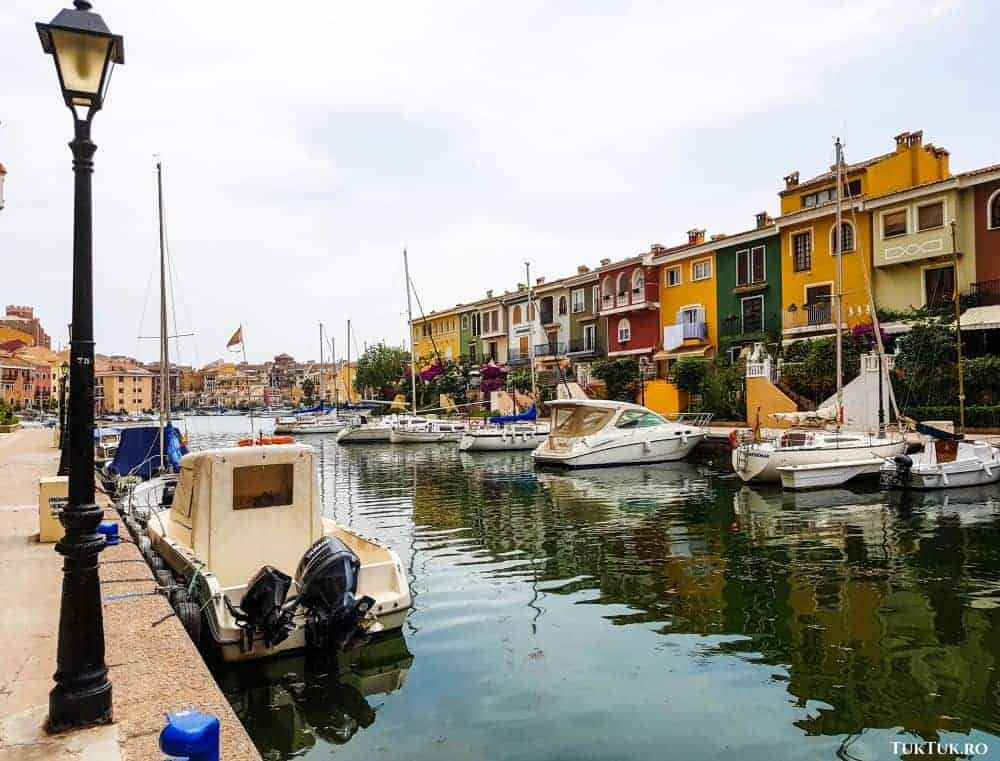



To all this, of course, you can add a host of restaurants and shops, so that the area has everything you need for a holiday (including a shopping center that features an Auchan supermarket – Alcampo, as the Spanish call it).
The beach in Port Saplaya is about 1 kilometer long and has fine sand, public mini-showers, toilets, and lifeguard stations. Transport into town – as long as you haven’t rented a car – is by bus or taxi (about €7).
7 Mercado Central and Mercado de Colon


A place worth visiting in Valencia, especially for foodies, is the Mercado Central – Central Market, a historic building built between 1915 and 1928 (to the designs of architects Francisco Guardia and Alejandro Soler) on an area of 8,000 square meters.
Unfortunately, because I stayed outside Valencia, and always when I arrived in town (afternoon or evening), the market was closed (daily opening hours are 7.30 am – 2.30 pm, and closed on Sundays). I didn’t get to photograph it except from the outside, but I found that inside is one of the freshest and best food areas in Valencia, a colorful and lively place in a very “lively” area.
I passed through a different kind of market, however. The Mercado de Colon is one of the city’s most iconic buildings, also built around the same time as the Central Market (1914, designed by Francisco de Mora y Berenguer).


The market (which has been restored and whose architectural details are extremely beautiful, reminiscent of Gaudi) occupies a semi-open area with plenty of cafés, bars, restaurants, flower shops, and other boutiques – meeting places for a chat or socializing. You cannot omit those two markets of the city, as they are beautiful and meaningful tourist attractions in Valencia.
6 Barrio del Carmen (El Carmen)

One of the pleasures of any first-time tourist to a city should be strolling its streets for no particular purpose. I admit that I like to do this, and as soon as I get the chance and, more importantly, have the time, I wander around the city without a map, letting my steps and intuition guide me and, at some point, I stop to eat at a restaurant or terrace that catches my eye. In Valencia, probably the best neighborhood to do this is El Carmen (basically, the Old Center).





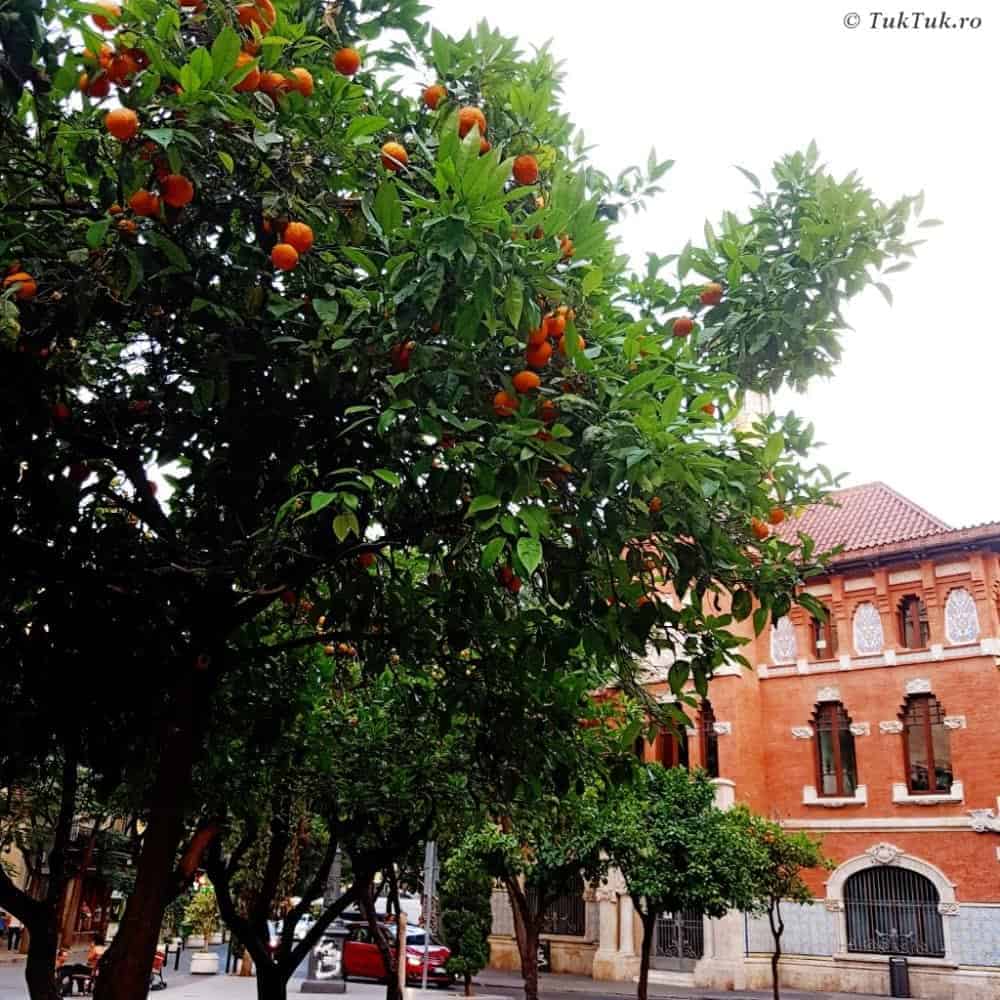
Charming streets, history at every turn, lots of places to visit, and a friendly, not at all aggressive atmosphere.
You can walk around El Carmen for hours without getting bored. Here you have restaurants, bars, live music areas, old churches, beautiful houses, boutiques, and shops. Here you’ll discover a local custom that adds color to the town: painting the shop fences with spectacular graffiti.
If you want to look for certain sights (which you may even find without wanting to), in El Carmen, you can see Torres de Quart and Torres de Serranos, two of the town’s old gates, towers that served as prisons for hundreds of years.
The two gates, facing opposite directions, have different architecture (they were built 100 years apart) and have faced numerous attacks from invaders throughout history.


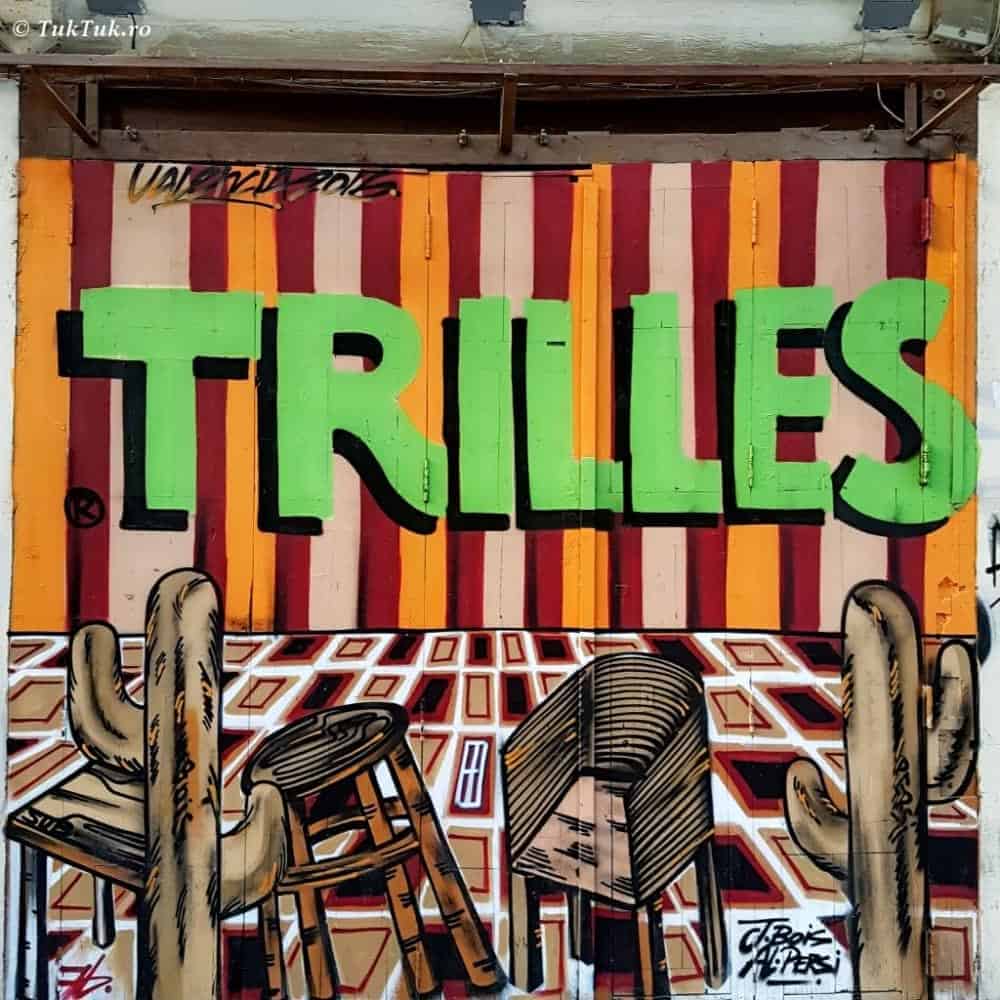

Also, in El Carmen, museum-goers have a few reasons to be satisfied, as it is home to the Museo Centro del Carmen, the Institute of Modern Art, the Museum of Prehistory, the Museum-House of the painter Jose Benlliure, the Valencian Museum of Ethnology and the Museum of the 19th Century.
5 Cathedral and Plaza de la Virgen

In the neighborhood of El Carmen (you could even say it’s part of it) is the Plaza de la Virgen, probably the best known but also the most beautiful square in the old part of the city, dating back to Roman times and bordered by three of Valencia’s most emblematic buildings: the Cathedral of Santa Maria, the Basilica of the Virgen de Los Desamparados and the Palau de la Generalitat.



Plaza de la Virgen is the perfect place to meet up with friends, sit on a (commercial) terrace and take lots of photos. It’s a sort of navel of Valencia, where you get the city’s pulse and allow yourself a few moments of respite before continuing your exploration of the city.
On the edge of the square’s central feature, a fountain depicts the god Neptune surrounded by eight naked women. A masterpiece by sculptor Silvestre Edeta, it is an allegory depicting the Turia river and its eight irrigation ditches.
Next to this square, the Cathedral of Santa Maria, or Seu as it is known locally, is the city’s main ecumenical attraction. Slightly tucked away in the urban landscape, the cathedral, whose history dates back to 1238, is an architectural blend of predominantly Gothic, Romanesque, Baroque, Renaissance, and Neoclassical elements.

It’s not necessarily beauty that defines this cathedral (I didn’t say it was ugly!) but the indoor presence of the Holy Grail, the cup from which Jesus drank during his last supper. Although there are a few other supposed chalices around the world that would be entitled to this title, the Spanish believe the original to be the one here. It dated from the 1st century and was donated to the cathedral by King Alfons el Magnanim in 1436.
The cathedral is open every day from 8.30 a.m. to 8.30 p.m. It costs 3 euros to visit. By chance – perhaps because I happened to be there in the same time as a wedding – I managed to get in without having to pay a ticket, and I also saw the Holy Grail, well guarded behind glass in a chapel to the right of the entrance, above a priest holding a service.




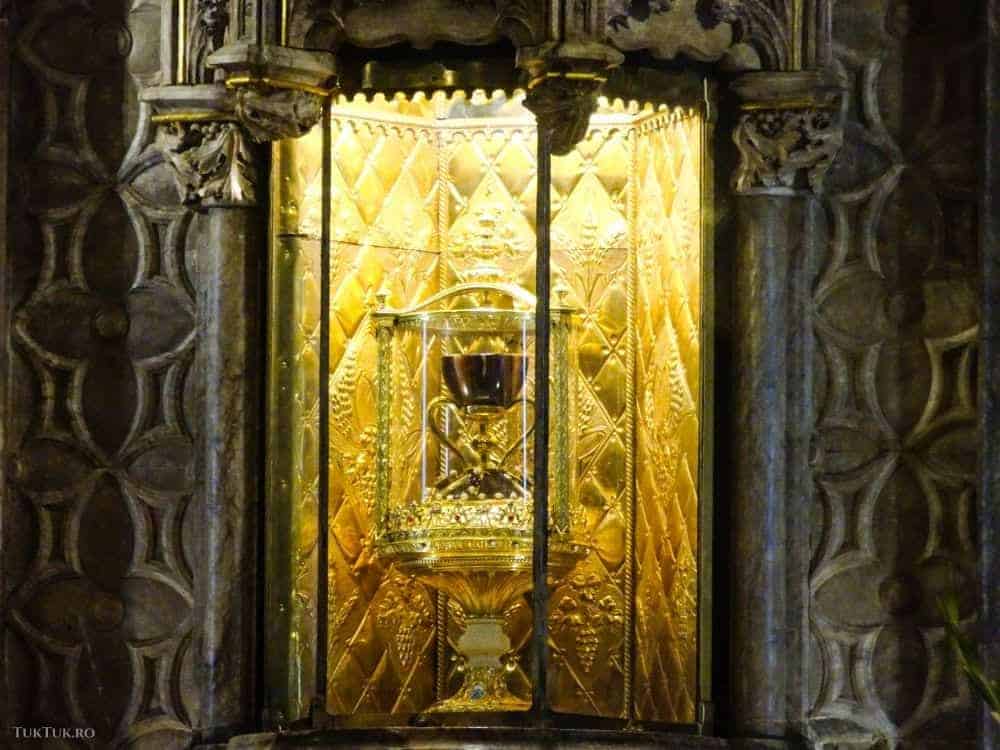


The story of this one is quite complicated – the chalice is said to have remained in the house where the last supper took place, a house belonging to the family of the evangelist Mark. He later took the object to Rome on one of the days he served as a translator for Peter. Saint Peter.
In the 3rd century, the “star” was removed from Rome by St. Laurentius and handed over to a Spanish soldier in Huesca (Spain). During the Muslim occupation of the Iberian Peninsula, the chalice was hidden in various Spanish monasteries and cathedrals. The kings of Spain sought to bring the object to their treasuries or palaces, and eventually, in the 15th century, the Holy Grail ended up in Valencia Cathedral, where it remains to this day. And yet, even if it passed the test of authenticity, no one can be 100% sure of the above information.
4 Malvarrosa Beach and Marina

Valencia has several beaches, and if you look at the top of them, it will look like this:
1. Malvarrosa,
2. El Saler (located 13 km south outside the city in the Albufera park area),
3. Port Saplaya (7 km north – it’s the one I stayed on),
4. Sagunto
5. Culera (the last two are a little further out of town).

The main beach is Malvarrosa, primarily because it is in the town. It is one kilometer long and very wide (135m). It’s an undeveloped beach, free, clean, lined with palm trees and all sorts of cheap stalls and the stretch of sand that Valencians come to sunbathe on when they feel like it.
Personally, I find it too wide for its essential purpose (you get bored by the time you get to the water), but I walked along the so-called boardwalk before nightfall, and it has a special charm, an atmosphere reminiscent of places of Los Angeles beaches.






Malvarrosa is divided into three areas: Malvarrosa, Las Arenas, and Patacona; all three are similar. But if you want to take the beach from the beginning, go to the Marina in Puerto de Valencia, where Las Arenas starts (after which it needs to be clarified where it ends and Malvarrosa begins).
You can walk around the port and possibly dine in a nice, elegant restaurant (Panorama) overlooking the sea. Restaurants (lots of them) can also be found in the promenade area but be aware that it’s pretty crowded here, especially in terms of parking.
3 City of Arts and Sciences

In terms of urban landmarks, Valencia is perhaps less known for the beautiful buildings in the Old Town and more for a modern architectural complex that sprawls in an airy part of the city, close to the Turia Gardens, a complex pompously named: the City of Arts and Sciences – Ciutat de les Arts i les Ciències.
The complex was inaugurated in 1998 and is the work of Valencian architect Santiago Calatrava. I have read some ‘expert’ opinions that deride the City of Arts and Science architecture. There can be no greater hater-ism: rarely do you see such a masterpiece in a major world city, perfectly embedded in the urban landscape, with a unique concept and varied functionality.




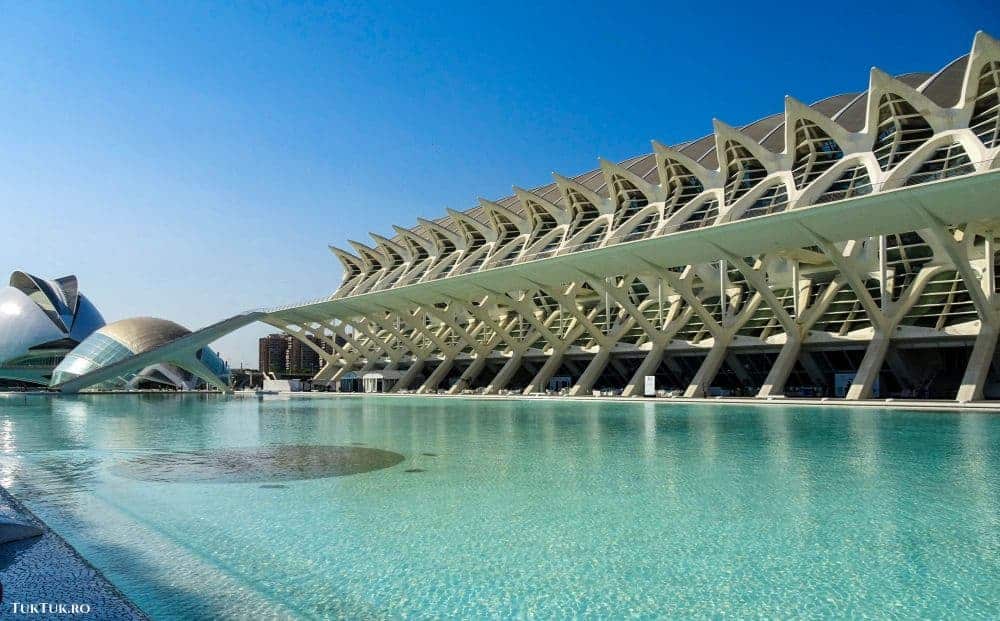

“The ‘City’ encompasses six zones: El Palau de les Arts Reina Sofia (in fact the Opera of Valencia and also a space for various cultural events), L’Umbracle (a beautiful garden stretching 320 m and including an open-air art gallery), El Museu de les Ciències Principe Felip (science museum), L’Hemisfèric (Imax cinema, planetarium, and laserarium, with a design in the shape of a human eye “looking” into a huge swimming pool), Oceanografic (aquarium and oceanographic park, with over 45. 000 animals) and Ágora (a versatile space where various events and launches are held).
All of these buildings are surrounded by areas where visitors can relax, strolling around the turquoise pools where they can even practice water sports.
I won’t take the areas of the City in turn, as I’ve only visited the Oceanograph (which I talk about below) but I definitely recommend a visit here, even for a stroll after dark, when the scenery is all the more beautiful. You can find admission prices for the various areas of the City on the resort’s website here.
2 Oceanographic

I chose the Oceanographic for an extended visit to the Arts and Science City area primarily because it seemed like the most spectacular option. Then, for a holiday with children, the Oceanografico in Valencia is definitely great fun and an opportunity for the little ones to discover new and fascinating things about the creatures that inhabit the water.


The Oceanográfico is essentially a huge park, created as a place to visit and a research center, divided into ten distinct areas.
For example, the marine zones reflect Mediterranean life, polar oceans, islands, tropical seas, temperate seas, and the Red Sea. There is a crocodile zone, a beluga and seal zone, a bird zone and a butterfly zone, a turtle zone, a flamingo zone, a shark zone, and a penguin zone, plus, of course, the dolphinarium, where daily shows of these beautiful and intelligent aquatic mammals take place.
This year’s theme is obviously ecological and the show is cute, if perhaps less successful than similar shows around Europe. But dolphins always have a special magnetism, so it’s worth spending half an hour (especially if you’re with children) applauding their acrobatics.









Some of the Oceanographer’s areas are outdoors, while others are indoors. Don’t miss the spectacular shark tunnel walkway or the jellyfish room. If you get hungry, you can dine in the underwater restaurant, surrounded by a huge aquarium with sea creatures, and if you want to cool off while wandering around the outdoor areas, there are plenty of refreshment stands, bars, etc.
Admission to the Oceanografic costs (in 2022) €33.70 (adults), €25 (children), and with the Valencia tourist card you get a 13% discount (this may vary).
1 Bioparc

I’ve noticed in recent years a “split” in the public when it comes to zoos. Some love them, and there are those you can’t mention a zoo because they jump up and down and give you a long, boring speech about how tormented the poor animals are when they’re not in their natural environment.
Of course, animals should stay in their natural environments and be happy (some of them, eaten by the bigger ones). Equally, the world shouldn’t have zoos like the one in Bucharest, where you feel you’ve gone back 50 years or so to a time when animal rights lovers were much fewer and Brigitte Bardot was younger and (much) sexier.

There are, however, some zoos that strive (and succeed) to create a space in which to gather all sorts of animals to show to the public, creating the impression that the people have arrived in their natural environment and not that the animals have been ‘planted’ in a city.
The Valencia Biopark is one of these. Basically, it’s an interactive zoo that has tried to remove almost all barriers between humans and animals, placing them in fantastically designed places practically almost identical to where they would have lived naturally.

The Valencia Bioparc was opened in 2008 and covers an area of over 100,000 square meters, aiming to protect the environment and create ongoing education on animal care and protection. The focus is on African species, but the park will not be limited to the Black Continent, with plans to expand by another 20,000 square meters in the next few years to include flora and fauna from South-East Asia and South America. Compared to other European zoos, I noticed fewer species in the Biopark. But nowhere have I seen a more spectacularly designed zoo.






Until then, however, you can admire many species of monkeys, take pictures with lemurs that are just a few years old and ask you to take a selfie with them, enjoy the presence of elephants, leopards, giraffes, rhinos, hippos, ostriches, lions, hyenas, antelopes and many other species that children will be delighted to see.
Admission to the Bioparc costs (in 2022) – €26.90 (adults) and €21.00 (children). Children under the age of 4 are free.
10 places to see in Valencia (video)
Conclusion
These would be some of the most beautiful tourist attractions in Valencia, as well as some suggestions on what to see and do in Valencia. Valencia, Spain, is a lovely city, and I guarantee that spending a holiday here is a wise choice that will be followed by memorable days.
Pin it!

You may also like: Top 10 tourist attractions in Zaragoza, Spain




